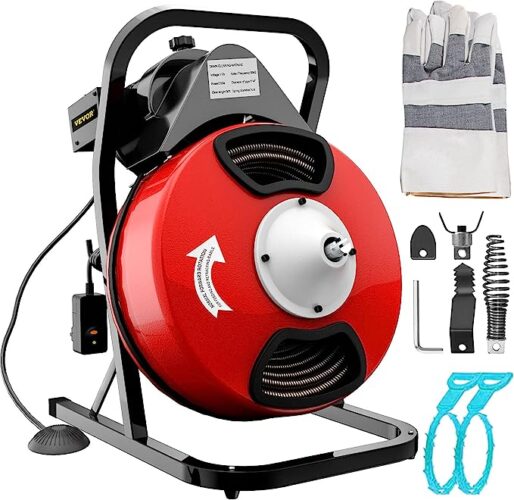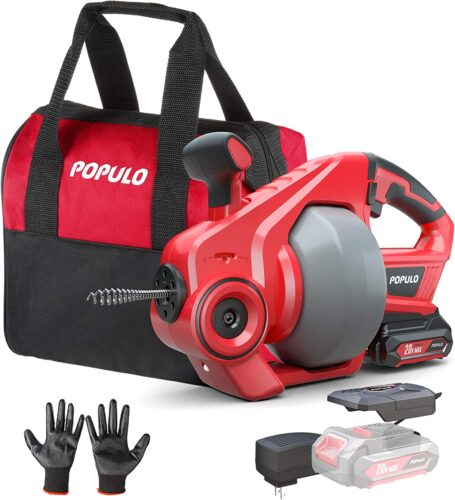“Why is my basement drain backing up after showering?” If you’ve ever experienced the frustration of a basement drain backing up after a shower, you’re not alone. Several reasons can contribute to this common plumbing issue.
In this article, we will explore the various causes of basement drain backups after showering and provide effective solutions to fix the issue. Whether you’re looking for DIY methods or what a professional plumber would do, we’ve got you covered.
Affiliate Disclosure: As a disclaimer, please note that some of the links included in this article are affiliate links. This means that if you click on one of these links and make a purchase, we may receive a small commission at no extra cost to you. We only recommend products or services that we believe can add value to our readers. Your support through these links is greatly appreciated and helps us to keep creating helpful content. As an Amazon Associate and affiliate, I earn from qualifying purchases.
Why Does The Basement Drain Back Up After Showering?
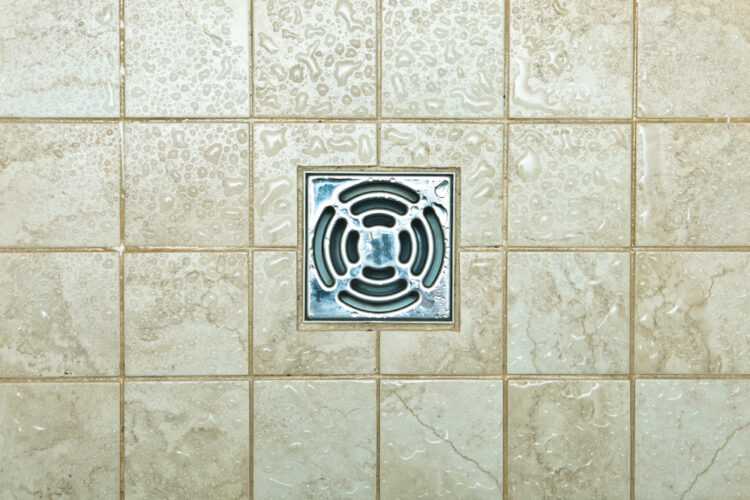
Too much water flowing into the pipes at once can overwhelm the system’s capacity, leading to backups. Additionally, blockages in the main sewer line can affect multiple drains, including the one in your basement. Another culprit could be a vent pipe obstruction, hindering proper drainage and causing water to back up in various drains. Clogged basement drains or floor drains, often caused by accumulated dirt, debris, hair, or soap scum, can also lead to sluggish drainage. In some cases, tree roots invading the main sewer line can cause clogs and backups.
Damage to sewer pipes or improper plumbing installation may disrupt water flow, contributing to drain backups. Lastly, if your property relies on a septic system, issues with the tank being full or malfunctioning can cause drain backups, especially after using water-intensive fixtures like showers. Understanding these potential causes can help you take proactive measures to prevent future basement drain backups after showering.
7 Reasons & Solutions To Your Basement Drain Backing Up After Shower
Below are seven causes and solutions explaining why your basement drain may back up after showering:
Reason 1: Too Much Water for the Pipes to Manage
Drain backups can occur when the volume of water entering the drain exceeds the capacity of the pipes to handle it efficiently. As a guideline, 4″ pipe can only handle 160 gallons per minute, it is crucial to recognize that these values can vary based on factors like pipe material, slope, and water pressure. Here are some points to consider:
1. Pipe Diameter: The diameter of the pipe plays a crucial role in determining its flow capacity. Larger diameter pipes can handle more water flow than smaller ones.
2. Flow Rate: The flow rate of a pipe is typically measured in gallons per minute (GPM) and depends on the pipe’s diameter and the water pressure in the system.
3. Restrictions and Blockages: Clogs, obstructions, or pipe restrictions can reduce the flow capacity, leading to backups.
4. Plumbing Design: The plumbing system should be appropriately designed to handle the maximum anticipated flow. This includes considering the number of fixtures connected to the drain and the size of the main sewer or drain lines.
To prevent drain backups due to excessive water flow, it’s essential to follow proper plumbing practices and ensure that the plumbing system is designed to handle the expected water load. Regular maintenance, addressing clogs promptly, and seeking professional advice can help maintain a reliable and efficient plumbing system.
DIY Solution: To address this issue, you can try to reduce the water flow during showers. Shorter showers or installing low-flow showerheads can help decrease the water volume entering the drain. Additionally, avoid using other water fixtures simultaneously to lessen the strain on the plumbing system. If your problem involves a leaking shower, we have some tips for that here.
Professional Solution: A professional plumber may recommend upgrading the basement drain pipes to a larger diameter, ensuring they can handle the increased water flow efficiently. This will involve a more extensive plumbing project, but it will provide a long-term solution to prevent drain backups.
By the way, if you let standing water sit for too long, it might eventually result in centipedes in your drain so I wouldn’t ignore the issue for too long.
Also make sure to check out our tips on how to unclog a toilet.
Reason 2: Blockage in the Main Sewer Line
A blockage in the main sewer line can affect multiple drains in your home, including the one in your basement. This type of clog is typically caused by the accumulation of debris, grease, or foreign objects in the sewer pipe. A common issue is tree roots growing into the main sewer line.
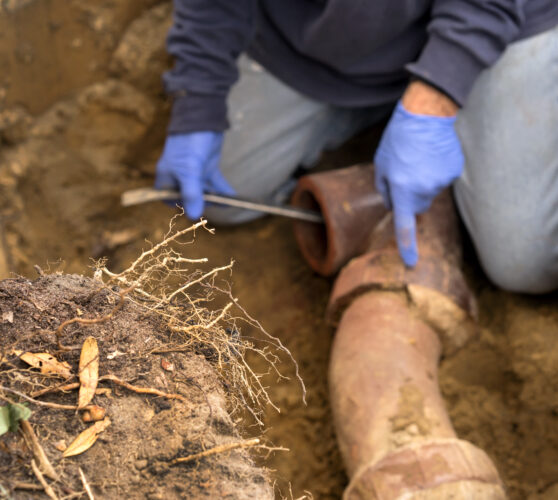
DIY Solution: You can attempt to clear the main sewer line using a drain snake or a plunger. However, keep in mind that this may only provide temporary relief, and the blockage might reoccur.
If the issue is tree roots, you have a few options for killing the roots. (Just a note, you may still need a professional to clear the roots from the line, but these will help to hinder regrowth.)
- Rock Salt – Rock salt is a popular solution for removing tree roots in your sewer line pipe. Rock salt sucks moisture from roots. The loss of water kills them.
- Foaming Root Killer – Foaming Root Killer works effectively against root growth in your sewer line pipe. It does not only remove the roots presently in your pipes but also helps against future occurrences.
- Copper Sulfate – Copper Sulfate is also effective in killing roots in your sewer line pipes. You can get it at your local hardware store. Just pour about half a cup down the toilet and flush as many times as needed to wash it off. Leave the house for a few hours and take your kids and pets with you. Copper Sulfate is toxic and banned in some places. It can kill pets that come in contact with it.
Professional Solution: Contact a professional plumber to inspect and clear the main sewer line using specialized tools like a sewer camera and hydro jetting equipment. This will ensure a thorough and effective cleaning, preventing further backups.
Reason 3: Vent Pipe Obstruction
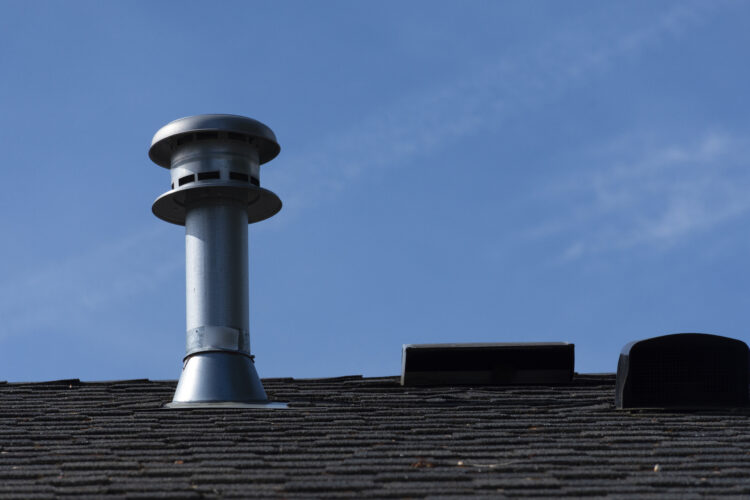
Vent pipes play a crucial role in the plumbing system, allowing air to flow in and enable proper drainage. If the vent pipe becomes blocked, it can lead to water backing up in various drains, including the basement shower drain.
DIY Solution: Inspect the vent pipe from the roof and check for any visible obstructions, such as debris or animal nests. You can use a long, flexible tool or water pressure to clear minor blockages.
Professional Solution: A plumber will conduct a thorough inspection of the vent pipe using a sewer camera and clear any significant obstructions with specialized tools. They will ensure that the vent pipe is free from blockages, restoring proper drainage.
Tip: While unclogging your sewer lines, consider unclogging your washroom. Because your clogged toilet can also drain water which is even more annoying.
Reason 4: Clogged Basement Drain or Floor Drain
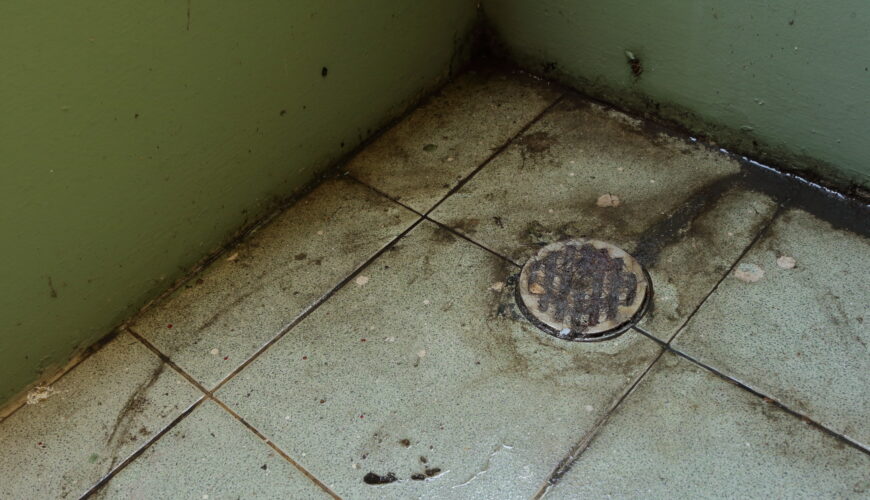
Accumulated dirt, debris, hair, and soap scum can lead to blockages in the basement floor drain, preventing water from flowing freely.
DIY Solution: Use a drain snake or a plunger to attempt to remove the clog manually. You can also try using a chemical drain cleaner, but exercise caution and follow the product’s instructions carefully.
Professional Solution: If the DIY methods are ineffective, contact a professional plumber to clear the basement drain using professional-grade equipment. They will ensure that the drain is thoroughly cleaned, restoring proper water flow.
Reason 5: Tree Roots in the Main Line
Tree roots invading the main sewer line are a common cause of drain backups. Roots can infiltrate small cracks or openings in the pipe, causing clogs and obstructing water flow.
DIY Solution: For a temporary fix, you can use a commercial drain snake or hydro jet to clear the roots. However, it is essential to understand that this may not entirely eliminate the problem.
Professional Solution: Contact a professional plumber to thoroughly clear the roots from the main line using a hydro jet or other specialized equipment. Additionally, they may suggest adding copper sulfate down the drain once a year to prevent future root growth.
Reason 6: Damage to Sewer Pipes or Improper Plumbing Installation
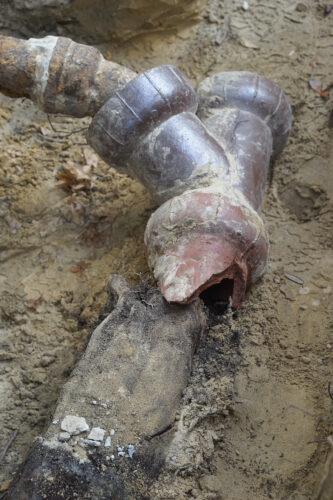
If the shower drain was not installed correctly or lacks the proper slope, it may not allow water to flow efficiently, leading to backups.
DIY Solution: Inspect the shower drain and the surrounding plumbing for any visible signs of damage or improper installation. If you notice any issues, consider consulting a professional plumber to address them properly.
Professional Solution: A plumber will conduct a comprehensive evaluation of the plumbing system, identifying any damage or incorrect installations. They will then proceed with the necessary repairs or adjustments to ensure proper drainage.
Reason 7: Septic System Issues
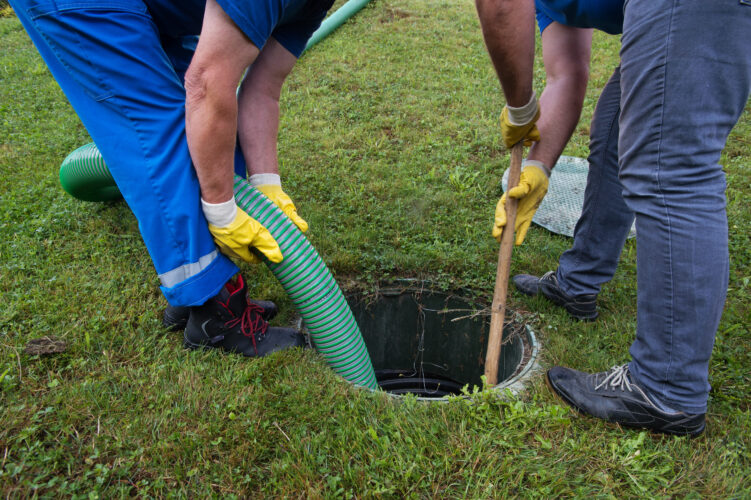
If your property relies on a septic system and the tank is full or not functioning correctly, it can cause drains to back up after using water-intensive fixtures like showers. Septic systems are a vital part of many residential properties, providing an eco-friendly way to treat and dispose of household wastewater. However, if the septic tank becomes overwhelmed due to excessive water usage or lack of maintenance, it can lead to serious issues, including drain backups.
A septic system consists of a septic tank and a drainfield. When wastewater from showers, toilets, sinks, and other household fixtures enters the septic tank, it undergoes a natural separation process. Solid waste settles at the bottom as sludge, while oils and fats float to the top as scum. The liquid effluent in the middle flows out to the drainfield, where it percolates into the soil, undergoing further treatment.
When the septic tank reaches its capacity, either due to lack of regular pumping or increased water usage, it can no longer properly treat the incoming wastewater. As a result, the excess water and waste might back up into the drains, causing slow drainage or even complete blockages. This can be especially evident after using water-intensive fixtures like showers, as they contribute a significant amount of water to the septic system.
DIY Solution: To avoid drain backups and maintain a well-functioning septic system, it is essential to implement proper septic system care and maintenance. Regularly scheduling septic tank inspections and pump-outs, typically recommended every 3 to 5 years, helps prevent the tank from becoming overloaded with accumulated sludge and scum.
Another critical aspect of caring for a septic system is being cautious about what goes down the drains and toilets. Flushing non-biodegradable materials, excessive use of chemicals, and disposing of oils and fats down the drain can harm the bacterial balance within the septic tank, disrupting its natural digestion process.
Moreover, using septic tank-friendly cleaning solutions can be highly beneficial.
These products are specifically designed to break down organic waste in the septic tank, promoting proper decomposition and preventing drain backups:
Roebic K-57-Q Septic System Cleaner
These cleaning solutions help maintain the health and efficiency of the septic system, ensuring it operates optimally for many years.
Professional Solution: Contact a septic system professional to inspect and maintain the septic tank regularly. They will identify any issues and ensure that the septic system functions correctly to prevent backups.
Understanding the importance of a well-maintained septic system and its impact on drain functionality is crucial for homeowners with septic systems. Regular inspections, pumping, water conservation, and responsible waste disposal practices all contribute to a healthy and effective septic system. By adopting these practices and utilizing septic tank-friendly cleaning solutions, you can avoid drain backups and ensure the longevity of your septic system, providing a safe and environmentally friendly way to manage household wastewater.
Be Proactive
As an additional helpful tip, when designing or renovating your basement, consider including a welded aluminum frame access door to the plumbing system for easy access and maintenance. This small but significant addition can make a world of difference in the long run. By incorporating a welded aluminum frame access door, you provide yourself and any future plumbers with a straightforward entry point to the intricate network of pipes and fixtures in your basement. In case of a plumbing issue, such as a drain backup after showering, having quick access to the plumbing area can save you valuable time and money.
Instead of resorting to extensive and costly dismantling of walls or flooring to reach the problem, you can easily address it through the access door. Moreover, routine inspections and maintenance of your plumbing become far more convenient with this accessibility, promoting the overall longevity and efficiency of your entire plumbing system. By taking this proactive step, you not only enhance the functionality of your basement but also gain peace of mind, knowing that you’ve safeguarded your property from potential water damage and unexpected plumbing emergencies in the future.
FAQs
How to understand if the mainline is clogged?
To start, you may notice several slow-running drains. It’s probably not a coincidence if more than one drain is slow. Instead, it could signify that one obstruction is causing problems for everyone. Furthermore, water would back up into adjacent drains, causing gurgling noises. Additionally, sewage scents may be detected emanating from the sewers.
How can a deep clog be unclogged?
To begin, remove the drain cap. Lower the auger into the drain afterwards. As you proceed, start twisting the auger handle clockwise. While encountering the blockage in the drainpipe, press the auger forcefully into it. Pull the auger back to dismantle the obstruction. Finally, propel it forward once more.
What could be the average cost to unclog a drain?
Cleaning a clogged drain can cost anywhere between $100 and $500 depending on the severity and location of the clog. This will vary by location. I recommend speaking with more than one company because prices can vary widely from location to location.
Final Words
Basement drain backups after showering can be a frustrating and concerning problem for homeowners. Understanding the potential causes of this issue and having effective solutions at hand is essential for timely resolution. Whether you choose to implement DIY methods or seek the expertise of a professional plumber, addressing the underlying causes of drain backups will help maintain a functional and reliable plumbing system, safeguarding your home from water damage and ensuring a stress-free showering experience. Remember, prevention is key, so regular maintenance and early intervention can go a long way in avoiding future drain backups.
